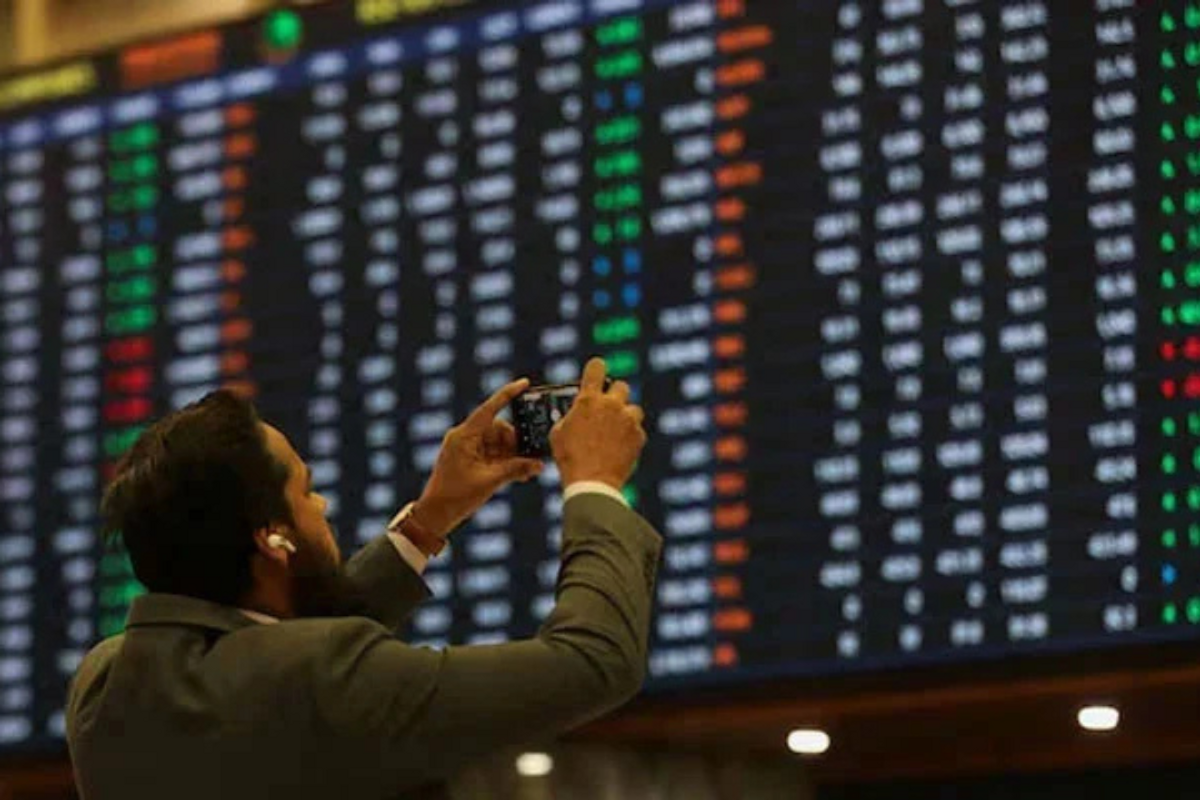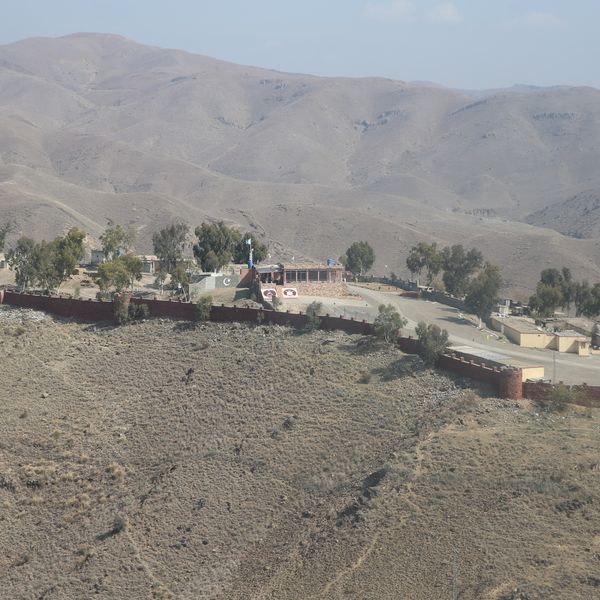Pakistan stock market surges 58% in FY25 amid record trading volumes, monetary easing
KSE-100 posts dollar growth of 55.5%, IPO market rebounds, and current account swings to surplus as macroeconomic stability returns

Haris Zamir
Business Editor
Experience of almost 33 years where started the journey of financial journalism from Business Recorder in 1992. From 2006 onwards attached with Television Media worked at Sun Tv, Dawn Tv, Geo Tv and Dunya Tv. During the period also worked as a stringer for Bloomberg for seven years and Dow Jones for five years. Also wrote articles for several highly acclaimed periodicals like the Newsline, Pakistan Gulf Economist and Money Matters (The News publications)

A stockbroker captures the share prices on his phone during a trading session at the Pakistan Stock Exchange (PSX) in Karachi
AFP/File
The Pakistan Stock Exchange (PSX) delivered a stellar performance in the fiscal year 2024–25 (FY25), with the benchmark KSE-100 index rising by 58.6% in local currency and 55.5% in U.S. dollar terms, closing at 124,379, up from 78,445 at the end of FY24.
The rally was fueled by aggressive monetary easing, improved liquidity, and a re-rating of fundamental value across key sectors, according to Sana Tawfik, head of research at Arif Habib Ltd.
Market participation hit record highs during FY25, with the highest-ever trading volumes and the highest traded value since FY21.
The State Bank of Pakistan (SBP) played a pivotal role by slashing the policy rate from 21.5% to 11%, marking one of the most aggressive easing cycles in the country’s history.
Investor confidence was further boosted after Fitch Ratings upgraded Pakistan’s credit rating from CCC+ to B-, following successful staff-level agreements with the International Monetary Fund (IMF) on a $7 billion Extended Fund Facility and a $1.3 billion Resilience and Sustainability Facility.
International recognition also improved, with MSCI adding five Pakistani companies to its Frontier Market Index in the latest semi-annual review, increasing Pakistan’s index weight from 3.7% to approximately 6.1%.
External account improves
On the fiscal front, Pakistan’s budget deficit narrowed to PKR 6.4 trillion (5.6% of GDP) in FY25, down from PKR 8.4 trillion (6.4% of GDP) in FY24. GDP grew by 2.68% during the year, bringing the total size of the economy to an all-time high of $411 billion, while per capita income rose to $1,824.
The external account also showed marked improvement, with Pakistan recording a $1.8 billion current account surplus during the first 11 months of FY25, compared to a $1.57 billion deficit in the same period last year.
The Pakistani rupee depreciated by only 1.9% against the U.S. dollar over the fiscal year, while average annual inflation dropped sharply to 4.61% (Jul–May), down from 24.52% in the previous year.
Despite these gains, the PSX experienced significant volatility due to geopolitical tensions. Sharp market corrections occurred during escalations between Pakistan and India in May and Iran and Israel in June. However, subsequent ceasefires triggered some of the strongest rallies in the market’s recent history.
FY25 also marked a resurgence in the IPO market, with a total of PKR 4.19 billion raised through three successful listings on the Main Board. These included BF Biosciences Ltd. in the pharmaceuticals sector, raising PKR 1.93 billion; Zarea Ltd. in technology and communications, raising PKR 1.03 billion; and Barkat Frisian Agro Ltd. in food and personal Care, raising PKR 1.23 billion.
As macroeconomic indicators improve and interest rates stabilize, investor interest is expected to drive further IPO activity in FY26.
Most active sectors
In terms of trading activity, the most active sectors by volume were technology with an average volume of 101 million shares, followed by banks (57 million), cement (54 million), power (47 million), and refineries (44 million).
On an individual stock basis, volume leaders included WorldCall Telecom Ltd. (WTL) with 50.9 million shares, K-Electric Ltd. (KEL) with 30.6 million, Cnergyico (CNERGY) with 29.5 million, Bank of Punjab (BOP) with 22.5 million, and KOSM with 18.4 million shares traded.
On the value front, the most active sectors included exploration and production (E&P) with $12 million in traded value, cement with $11 million, oil and gas marketing companies (OGMCs) with $10 million, banks with $9 million, and automobile assemblers also with $9 million in traded value.
Regional portfolio investment
Regionally, FY25 witnessed widespread net selling by foreign portfolio investors (FPI) across all major Asian markets. Taiwan saw the highest outflow at $28.8 billion, followed by South Korea at $23.6 billion and India at $11.3 billion.
Other countries such as Malaysia, Vietnam, and Thailand recorded outflows of $3.5 billion, $3.1 billion, and $3.2 billion, respectively. Smaller net sells were observed in Indonesia ($1.6 billion), the Philippines ($477 million), Pakistan ($300 million), and Sri Lanka ($41 million).
Sana Tawfik attributed this uniform net selling trend to geopolitical tensions, reciprocal tariffs announced by the United States, high global interest rates, pressure from a strong U.S. dollar, and a general shift in investor appetite toward developed markets.
On the domestic front, portfolio investment data revealed a mixed trend across investor categories. Banks and development finance institutions (DFIs) led with a net buy of $392 million, followed by companies at $92.5 million, individuals at $66.8 million, other organizations at $12.5 million, and non-banking financial companies (NBFCs) at $2.2 million.
Conversely, insurance firms recorded net selling of $11.2 million, brokers sold $18.1 million, and funds experienced the largest outflow at $236.4 million.










Comments
See what people are discussing